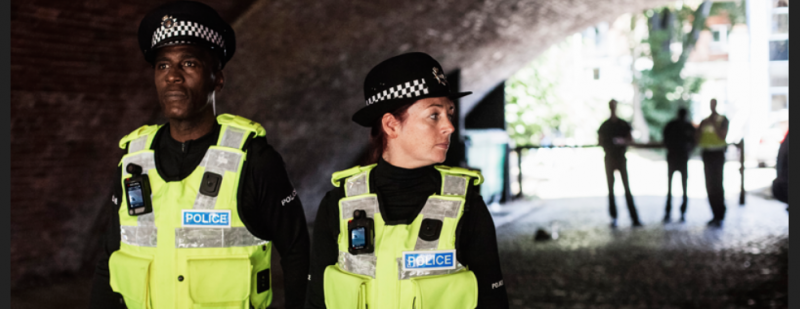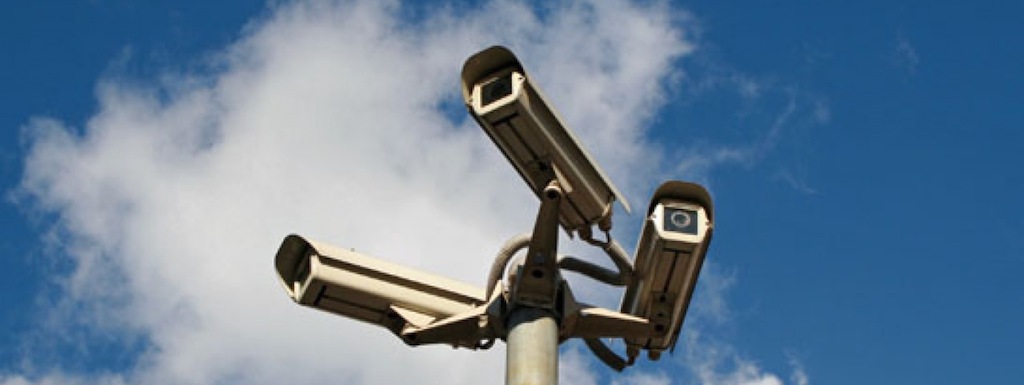Evidence Review into Public Experience and Confidence of Body Worn Video in a Policing Context

CRISP researchers have produced a commissioned research report to support the provision of Body-Worn Video (BWV) Cameras in policing in Scotland. The research was commissioned by Police Scotland, the Scottish Police Authority (SPA) and the Scottish Institute for Police Research (SIPR) in autumn 2021. The report captures existing knowledge about the experiences and implications of the police use of BWV, with a particular focus on contemporary oversight and accountability structures and mechanisms. It also examines issues associated with technological change and data protection processes. The report is intended to shape and guide the future provision of BWV in policing in Scotland.
The full report is available here.
[http://hdl.handle.net/1893/34460]
For further information about the research please contact:
Professor William Webster, University of Stirling
Dr Diana Miranda, University of Stirling
Evidence Review into Public Experience and Confidence of Body Worn Video in a Policing Context (June 2022)
Executive Summary
This report provides research findings from a rapid research project reviewing the use of Body-Worn Video (BWV) cameras in a policing context, with specific reference to police-citizen interactions and scrutiny mechanisms. The research was conducted in November and December 2021, using a methodology consisting of a literature review and a sequence of semi-structured interview with BWV experts. The research was undertaken with a view to providing advice and guidance to Police Scotland for the potential widespread future roll-out of BWV in Scotland. It is evident, from the research reviewed here, that BWV is being deployed internationally by law enforcement agencies and other public service providers. Typically, BWV is recognised to provide evidence of incidents, provide a level of personal protection and increased transparency in policing. The rationale for the use of BWV in policing is well established and is afforded a good level of public support. It is also evident, that across UK police forces there is differentiated use of the technology and associated governance mechanisms. In this respect, Police Scotland is in an advantageous position in that it can learn from what is perceived to be ‘best practice’ elsewhere in the UK and beyond. It is apparent that across the UK there are novel emergent mechanisms used to govern BWV in relation to scrutiny and accountability. These include dedicated Scrutiny Panels and practices referred to as random ‘dip sampling’, as well as dedicated codes of practice and use protocols. Here, it is suggested that Police Scotland review what other police forces are doing in this area and design processes that are compatible with Police Scotland’s institutional arrangements. The research presented here also suggests that BWV use protocols and data management procedures are established prior to the widespread deployment of the technology. One aspect in which published literature was lacking was in relation to the impacts of BWV on minority groups and ethnic minorities. Here, the evidence is mixed with some authors claiming BWV strained community relations, whilst others claimed BWV made police interactions more transparent. This points to both, a need for further research, plus the use of caution in the use of BWV in certain situations. It is also noted, that whilst there is a general level of public support for BWV, this relates primarily to basic BWV camera units and that this level of support cannot be assumed from more sophisticated data processes, such as those associated with face recognition and live streaming technologies. Here, it is recommended that Police Scotland implement mechanisms that ensure a degree of oversight and accountability in how BWV cameras are used. This can ensure legitimacy of use and facilitate public confidence in the use of the technology.
Recommendations
This review report presents evidence of BWV deployment in policing contexts, including police-citizen interactions and scrutiny mechanisms. This evidence points to a series of recommendations that can be considered before the widespread deployment of BWV in Scotland. Police Scotland is in an advantageous position, in that it can build on best practice from elsewhere and can implement scrutiny and accountability governance processes that can ensure public support and legitimacy for the use of this technology. Section 5 of this report sets out the recommendations in full. They are not intended to be prescriptive and assume that any new protocols or institutional mechanisms are tailored specifically for the Scottish policing context. In brief, the recommendations are (over page):
Citizen and Community Engagement
1. To continue to engage with the public and diverse communities to consider their concerns as they have direct experiences of BWV, and as governance mechanisms and the technology evolves.
2. To seek to build trust with vulnerable communities, via ongoing dialogue, about the role, purpose and function of BWV.
3. To facilitate and keep abreast of research on the use and impacts of BWV in public service contexts, especially in relation to trust in service provision and accountability mechanisms.
4. To be very cautious about ensuring public support if Police Scotland consider merging BWV with other technologies and software processes, especially face recognition and live streaming. Public support for BWV cannot be assumed if the capability of the technology changes.
BWV use in Policing and Best Practice
5. To engage with other public and emergency services to ascertain best practice in the use of BWV and its governance.
6. To ensure that the provision of BWV and its governance is contextualised to the unique legislative and regulatory environment of Scotland, including in relation to data protection and biometric requirements.
7. To ensure that knowledge about previous use of BWV in Scotland, by armed officers and during CoP21, is codified and shared in order to inform best practice.
8. To develop clear protocols covering all elements of BWV use, including in relation to operational and training matters, technical specifications, data protection requirements, performance indicators, a dedicated Code of Practice, and formalised mechanisms for accountability and governance.
Governance of BWV: Legal and Ethical issues
9. To comply with the recommendations and guidance published by representative bodies such as The College of Policing (2014 and 2019) and the UK Information Commissioner’s Office (ICO) to support the process of BWV adoption, training and implementation. This would include compliance with recommendations concerning ethics.
10. To develop standardised practices for the operation and governance of BWV in Scotland.
11. In conjunction with the Scottish Police Authority, to develop strategies and mechanisms to realise effective scrutiny and oversight to ensure that the provision of BWV is accountable and delivered in the public interest. In this report, it is recommended that independent forms of scrutiny and oversight are developed.


